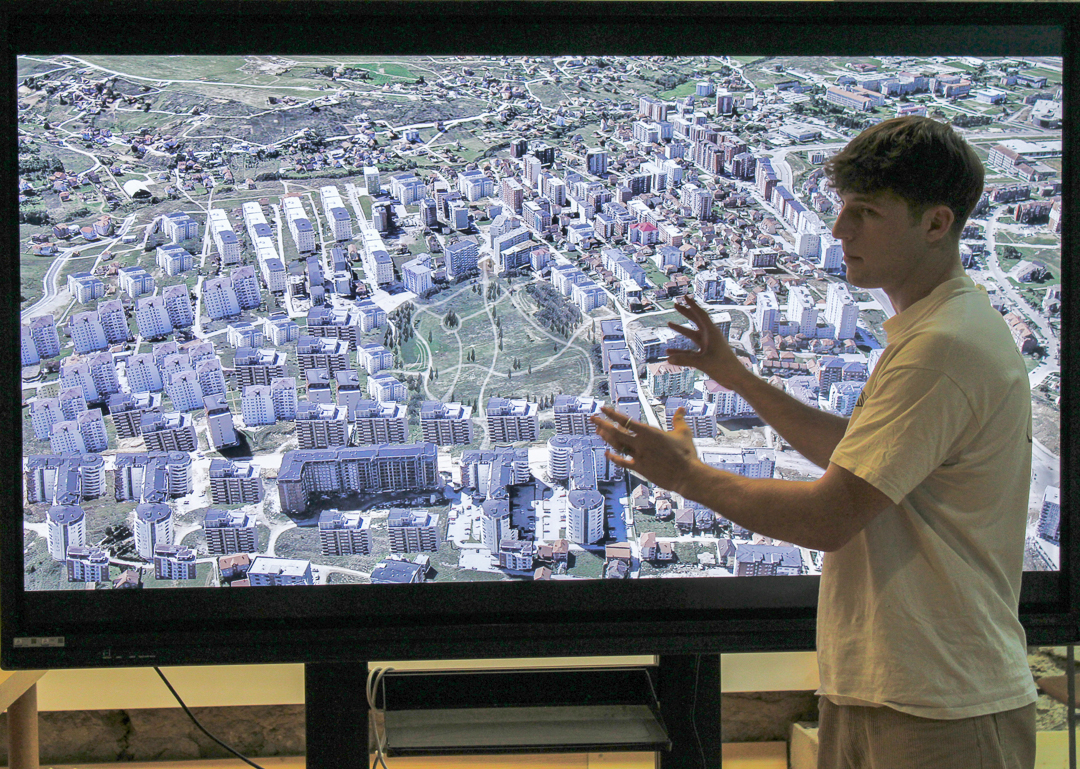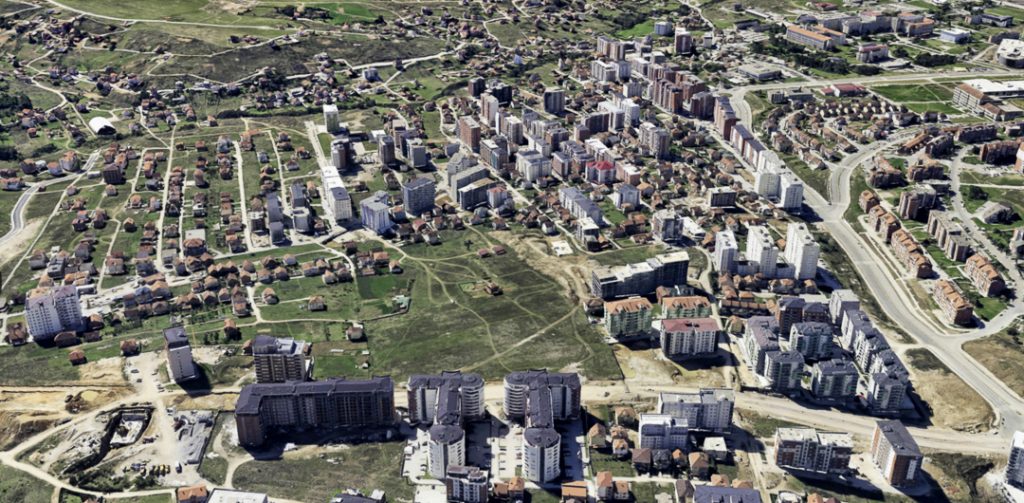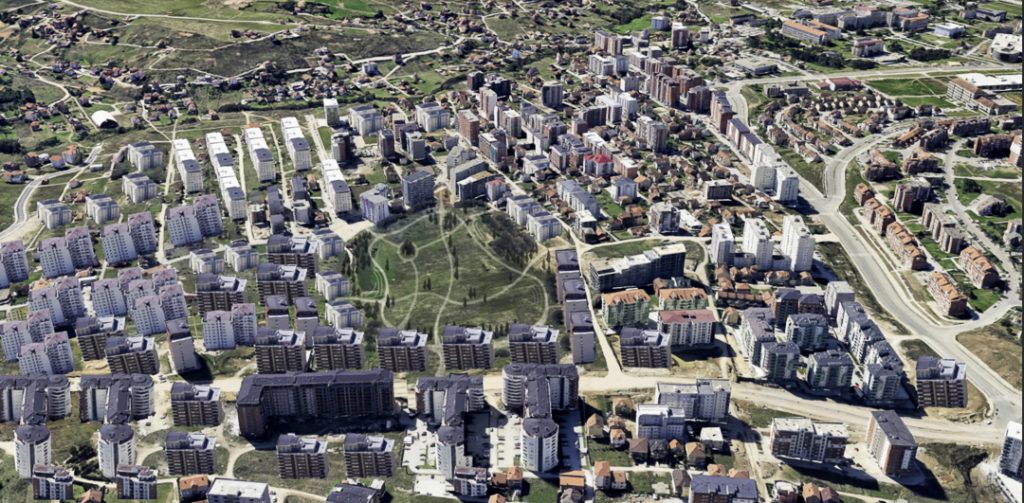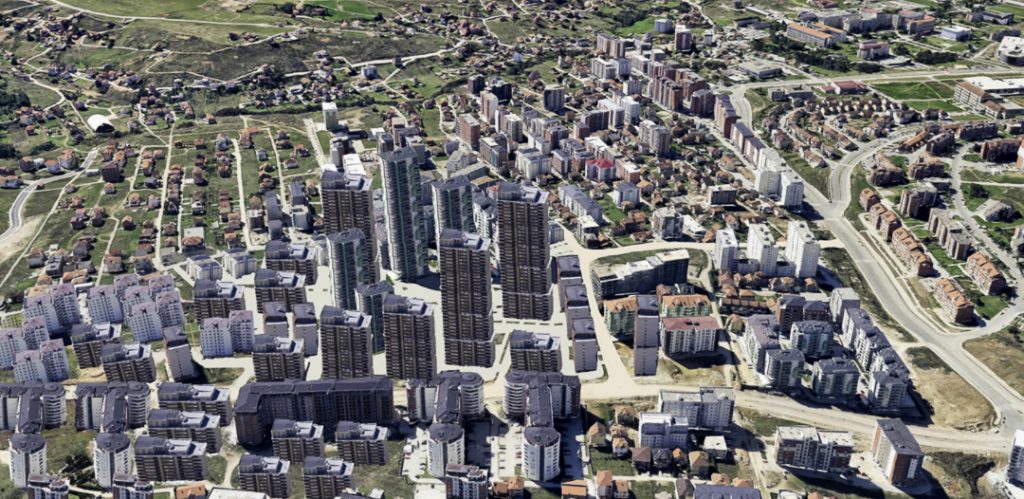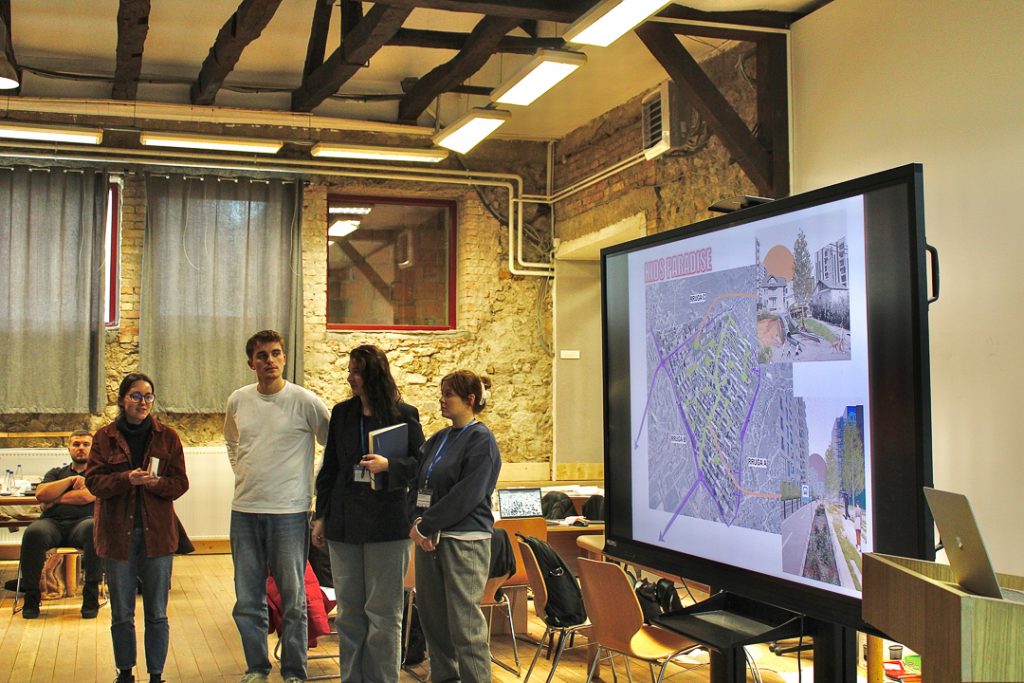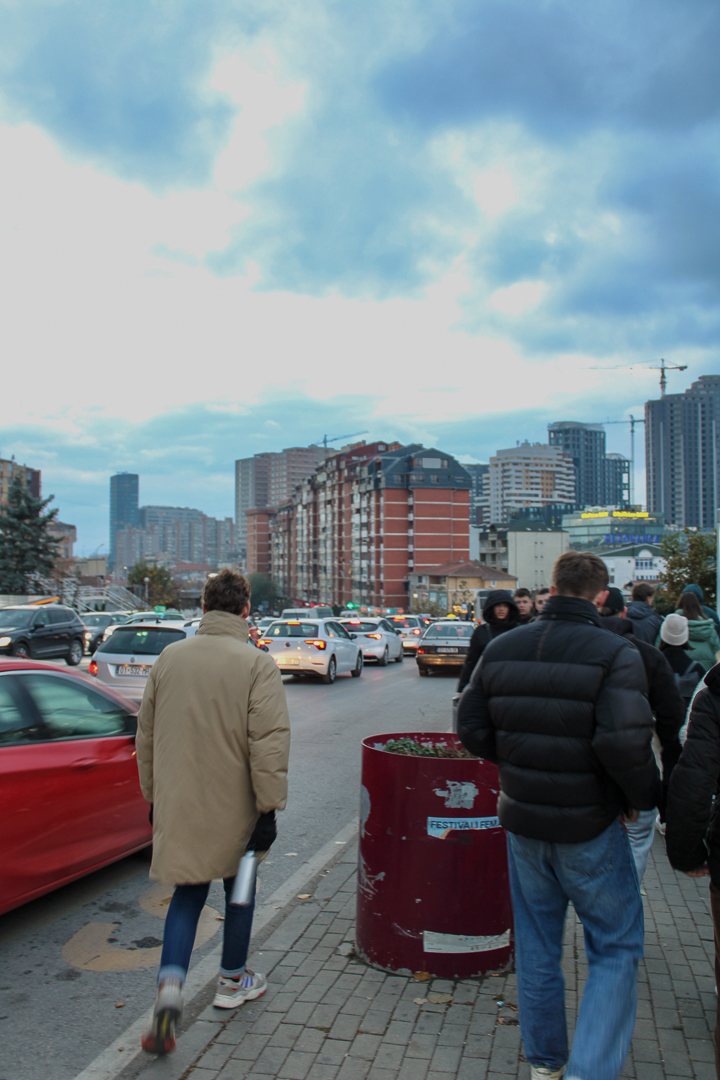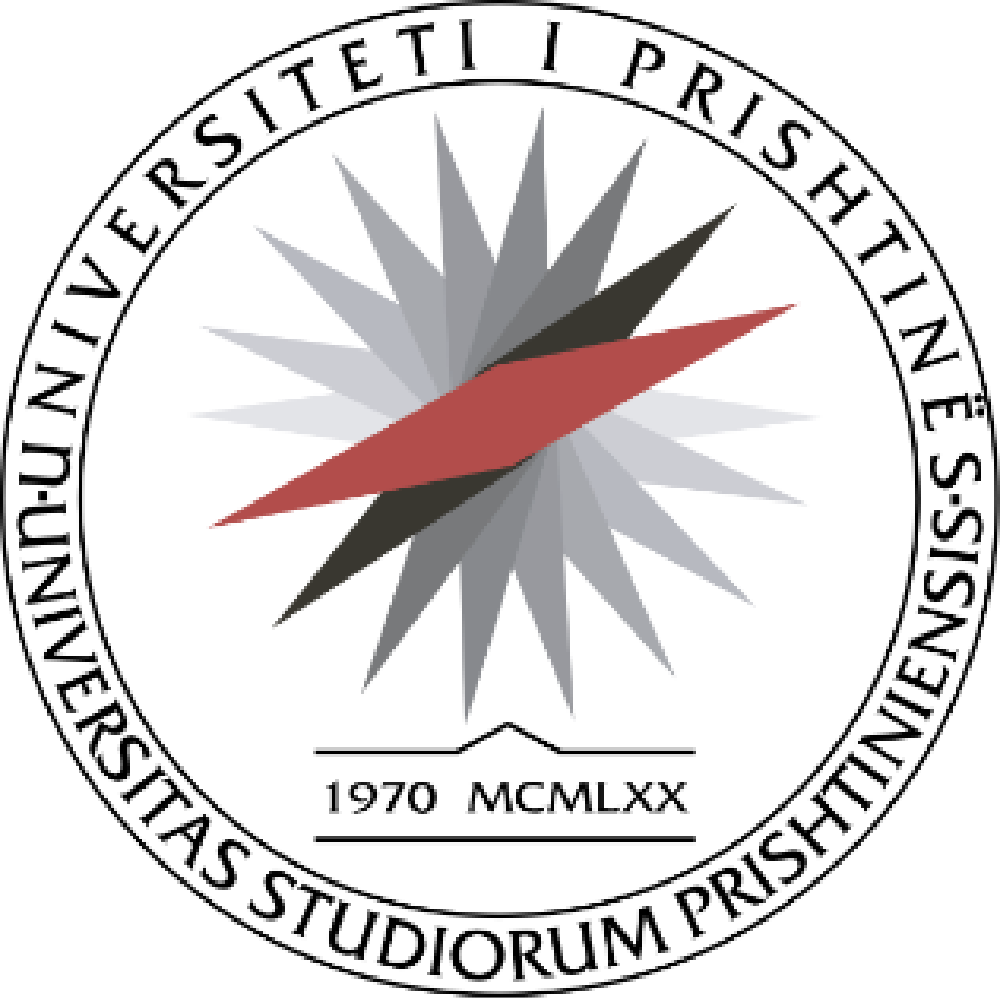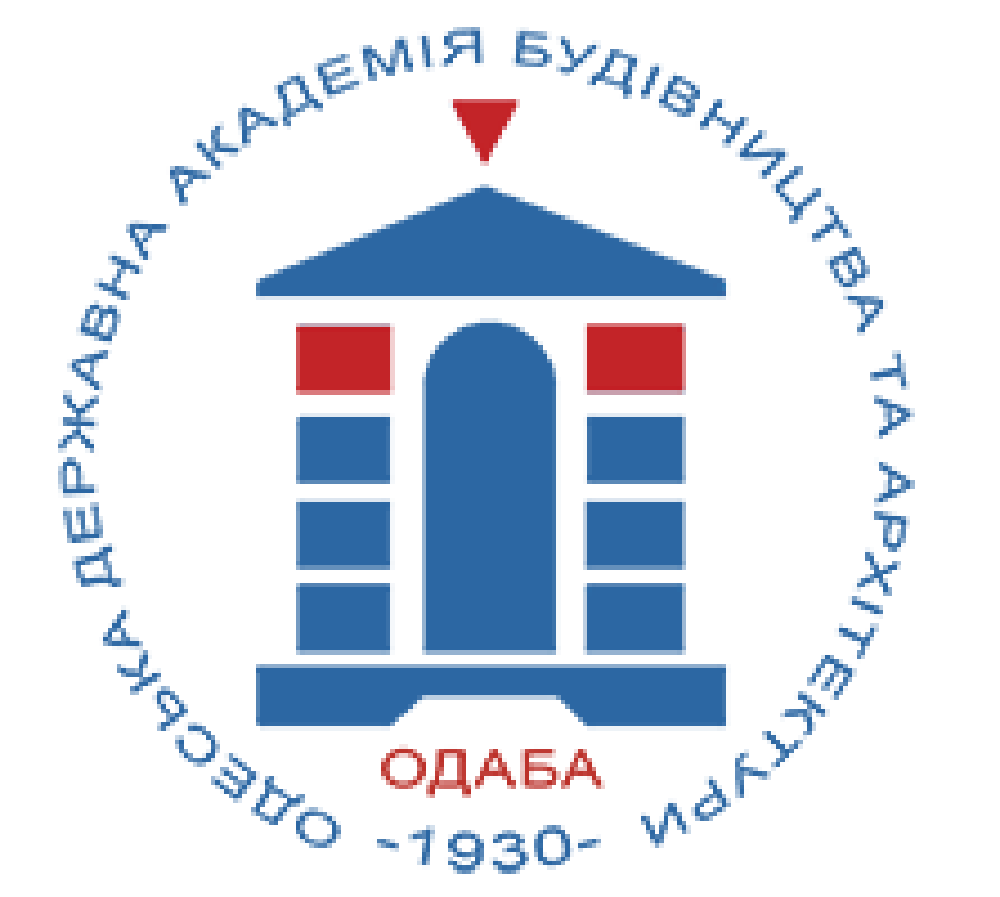Group 5
Transforming Matiçan:
Two Extremes
The team presented two contrasting scenarios for the development of Matiçan, aiming to reduce congestion on the main street and introduce new access routes for cars and pedestrians. In the first scenario, the group proposed to place a park at the district's heart and increase the surrounding blocks' density. The park should serve as an open gathering space for the residents of Matiçan, with new pathways providing easier access for pedestrians. The visualizations illustrate an open area featuring playgrounds and sports facilities, framed by Matiçan’s existing high-rise buildings and residential blocks.
In a second scenario, a dense urban core with high-rise buildings is placed at the center of the district, surrounded by smaller green spaces on the outskirts. This central, high-density area would function as a town square and urban hub. In both suggestions, new connections between streets C (Rruga C) and A (Rruga A) are designed to improve the accessibility and connectivity within the district.
Group 7
Creating a Kids Paradise: How Matican Can Become a Safer, Greener, Child-Friendlier
The group's second scenario, which was titled "Kids Paradise" city, envisioned Matiçan as a particularly child-friendly and safe place. Through two collages, they illustrated their idea of a district where cars are primarily removed from its core and traffic is significantly reduced. The plan proposes the creation of high-quality pedestrian pathways that interconnect green nodes. These green public spaces would be developed where smaller buildings currently stand. However, rather than demolishing these buildings, they would be repurposed into community centers and public squares, surrounded by playgrounds and other gathering spaces for the residents.
In Addition to the traffic reduction at the city center, the group suggests establishing "Mobility Hubs" at specific points on the city's outskirts. These mobility hubs would allow residents to park their vehicles outside the district, freeing the inner spaces of the city for pedestrians and cyclists. The goal is to slow down traffic and transform the Matiçan´s main street, which was previously a barrier, especially for children, into a more accessible space. Overall, the group's concept envisions Matiçan as a city characterized by traffic-calmed, green, and child-friendly spaces, allowing children to move freely and safely throughout the city.
An Evening in Fushë Kosova: Exclusive Insights with Hamdi Qorri
This evening, we embarked on a memorable exploration of Fushë Kosova, one of Prishtina’s older districts, and now an independent city. Our guide, Hamdi Qorri, a renowned architect and urban planner, led us through the winding streets of this quarter, revealing its character and history through unique insights only a local expert could provide. His vivid moderation brought to life the transformation this area has undergone over recent decades.
Qorri began by recounting the neighborhood’s evolution, describing how, twenty years ago, it was characterized by sprawling gardens and large plots. Where modern buildings now stand, typical single-family homes with generous yards once filled the landscape. Back in 2000, Prishtina had around 22,000 residents, most of whom lived in outer districts such as Fushë Kosova. But today, the city’s population has doubled, and with the following economical shift many original residents sold their land, making way for investors to reshape the city's skyline and structure dramatically.
As we continued our tour, Qurri addressed the challenges that have come with this rapid, unplanned development, saying that“this area was never planned for so many people”.. The major road that once served as the main thoroughfare is now known as “the Dusty Road” since, in summer, when many Kosovars return from abroad, it becomes so congested that it’s nearly impassable. This seasonal influx highlights a stark contrast: in winter, many streets and buildings are almost deserted, but in summer, the neighborhood feels packed to the brim.
Qorri giving us some more input while inviting us to a cafe in the old neighborhood
Qurri led us through narrow alleyways, where dense building patterns create additional challenges. Many structures are built so close together that there are few, if any, emergency access routes. He pointed out the absence of green spaces and parks as particularly concerning. “There’s hardly any breathing room here,” he noted, “this old neighborhood has been built up without leaving space for the community or nature.”
One of the most insightful aspects of our tour was Qorri’s perspective on the challenges of urban planning. He spoke openly about the influence of "construction cartels" and powerful investors who dictate where and how new buildings are developed—often with little consideration for the needs of local residents. This issue is especially urgent in older neighborhoods like the one we visited, where valuable plots of land have frequently been sold to developers, leading to construction projects that erode the area’s green spaces and natural resources. Unlike the densely built urban core, this historic neighborhood has lost much of its original charm and character.
Although Kosovo has significant agricultural potential, there is growing pressure to prioritize real estate development over conserving land for future generations. On a positive note, Hamdi mentioned how local activists recently succeeded in blocking the construction of a large hydroelectric plant that would have threatened nearby green spaces.
This evening provided us with a new perspective on Prishtina, revealing layers of history and conflict embedded even in areas beyond Prishtina. Qorri left us with a powerful impression: it is often these older neighborhoods that best reflect a city’s authentic character, highlighting the importance of preserving them amidst the forces of modern development.
